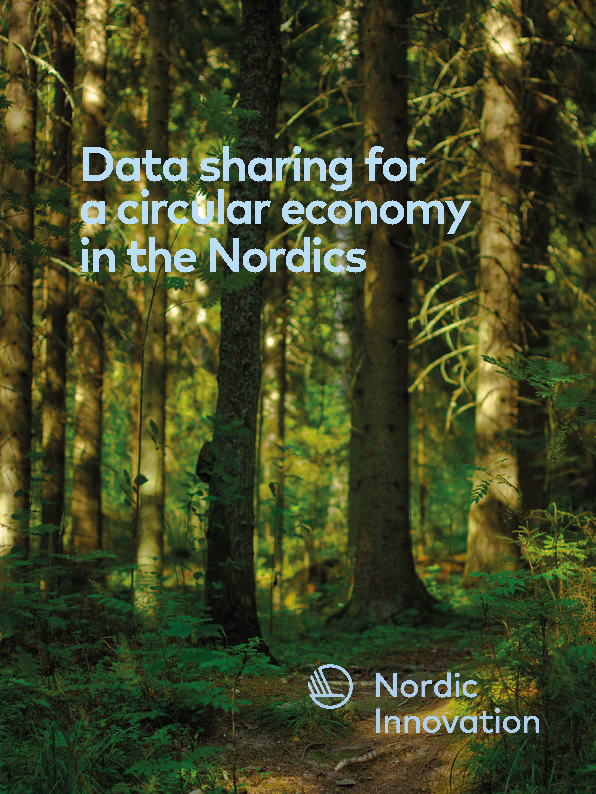Data Sharing for a Circular Economy in the Nordics
Baseline Mapping 2021

Informasjon
Publish date
Abstract
The increasing knowledge about humans’ negative impact on the climate, as well as the urgency to make drastic changes to avoid irreversible consequences to the natural environment, calls for innovative solutions and initiatives to accelerate the green shift. The recent IPCC report underlines the severity of the situation.The traditional ”take, make, waste” approach of production and consumption will not be sustainable in a world with ever-expanding consumption rates, and businesses are starting to understand the financial and ethical risks that this entails.$140 billion can be captured by 2030 in the Nordics if the circular economy is implemented at scale.The circular economy offers an alternative approach to the linear economy and redefines the concept of waste as a valuable resource. A transition from a linear economy to a circular economy has the potential to optimize material flows, reduce CO2 emissions, and enable a sustainable future.The circular economy also holds significant value potential, and it is estimated that up to $140 billion can be captured by 2030 in the Nordics if the circular economy is implemented at scale2. To realize the trapped value, collaboration is required across the entire value chain with traditional and new businesses. An ecosystem approach across the value chain is needed to fully close the circle.The rapid development of new technologies is a game changer for circular business models, and are opening new opportunities faster than ever before. There is a range of technologies that are transforming value chains and creating well-functioning ecosystems, spanning from artificial intelligence to Internet of Things. The pace at which these new innovations are being developed and scaled is advancing rapidly.The technologies are underpinned by the ability to share and utilize data. This could be data on product traceability (e.g. material composition, origin, characteristics etc.) or product performance (e.g. expected lifetime of a product, repair guidance etc.). However, there are barriers present today for collecting, sharing and utilizing data between actors, such as data security, interoperability, quality, and business sensitive data.This report aims to map out the current landscape of data sharing for the circular economy in the Nordics, as well as the future potential and opportunities that follow.Based on insights from interviews and survey responses from Nordic organizations, the report identifies barriers and enablers to an accelerated transition towards use of data sharing for circularity, the role Nordic and international policy can play in this, and presents recommendations for the implementation of pilot projects.
Organisation